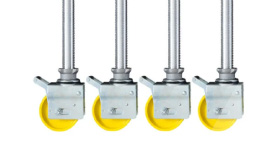Are you in the process of buying your first scaffold tower? If so, we recognise that it can be somewhat confusing with all the new terminology, so we’ve created and continue to create the only access equipment glossary.
Adjustable Legs
Adjustable legs ensure mobile scaffold tower stability, especially on uneven terrain. Its primary function is to compensate for ground level variations, guaranteeing a level and safe work platform. These legs typically utilise a threaded screw jack mechanism, allowing for precise, manual height adjustments of individual legs. This fine-tuning enables levelling on slopes, steps, and other irregular surfaces, preventing tipping and maintaining crucial stability at height. In essence, adjustable legs adapt the tower’s base to the ground, significantly enhancing worker safety by providing a reliable and level working environment. You can read our blog post on how we manufacture our adjustable legs if you’d like to learn more.
Ladder Frames
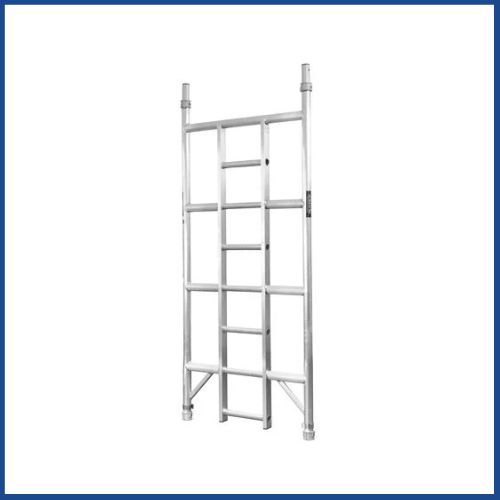
Ladder frames form the essential vertical structure of scaffold towers, providing support and a safe climbing pathway. Constructed from durable materials like aluminium or steel, these frames have two vertical side members connected by horizontal rungs, creating a built-in ladder. By stacking these frames, workers can efficiently build the tower to the desired height, establishing stable work platforms. The integrated rungs enable safe ascent and descent, while the frame’s robust design ensures the tower’s overall structural integrity. Available in various sizes and widths, including single and double configurations, ladder frames are fundamental building blocks providing vertical support and safe access to elevated work areas.
Span Frames
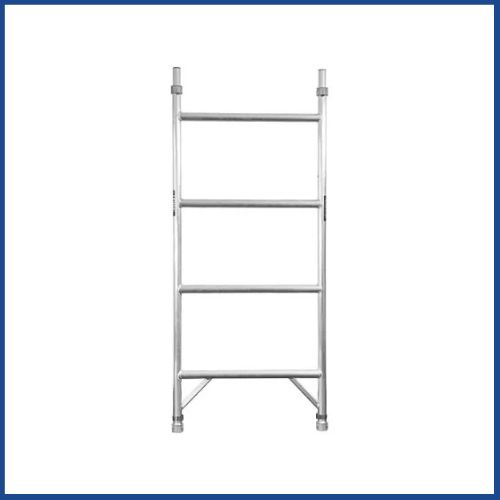
Span frames are horizontal structural components crucial for expanding the working area and enhancing the stability of scaffold towers. Constructed from durable materials like aluminium or steel, they connect with ladder frames and horizontal braces to create wider base and platform areas. This increased width, essential for projects requiring ample workspace, allows for more significant worker movement. Span frames are fundamental in creating ‘double width’ scaffold towers and are available in various widths to accommodate diverse configurations, effectively broadening the tower’s functionality and structural integrity.
Locking Castors
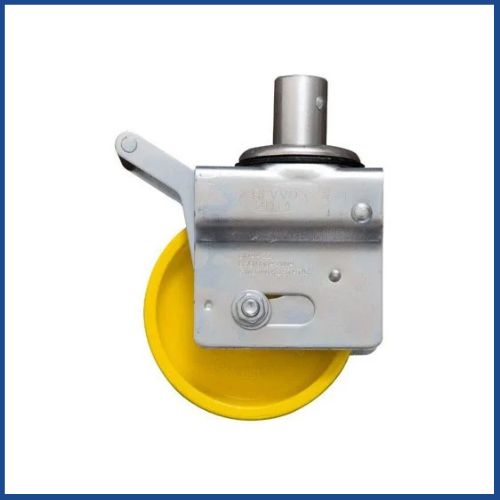
At the base of every mobile scaffold tower, you’ll find locking castors: heavy-duty wheels designed for both movement and secure positioning. Its function is to enable effortless relocation across a work site, significantly reducing the time and labor required for large projects where frequent repositioning is necessary. Crucially, each castor features a robust locking mechanism that, when engaged, prevents wheel rotation, effectively immobilising the tower. This locking feature is paramount for safety, ensuring a stable work platform, especially at height, and preventing potentially catastrophic accidental movement. Furthermore, many locking castors incorporate adjustable screw jacks, allowing for precise levelling on uneven terrain. This adjustability is vital for maintaining the tower’s stability and ensuring a safe working environment.
Trap Door Platform
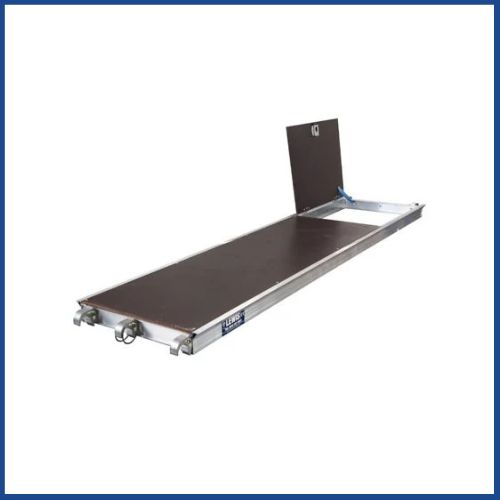
Trap door platforms are essential safety components in scaffold towers, providing secure and efficient vertical access. These platforms feature a hinged “trap door” section that opens, allowing workers to climb safely between levels and eliminating the hazards of external climbing. These platforms are constructed from durable materials like steel or reinforced plywood and are designed to support substantial weight. Locking mechanisms prevent accidental opening, while integrated guardrails and toe boards enhance safety. By strategically placing trap door platforms every 2 metres, workers gain easy access to various work areas, creating safe and functional working levels. These platforms merge a robust working surface with a secure access point, significantly improving both efficiency and safety with scaffold tower use.
Horizontal Brace
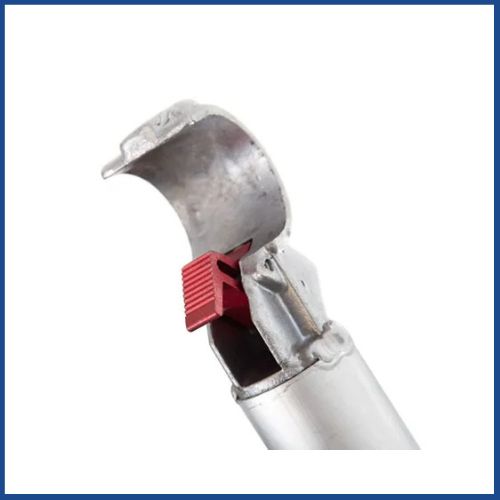
Horizontal braces are critical structural elements in scaffold towers, providing lateral stability and ensuring worker safety. Constructed from durable materials like aluminium or steel, these braces maintain precise spacing between vertical frames, preventing swaying and collapse. They also function as guardrails, minimising fall risks at working levels. By distributing loads evenly, horizontal braces enhance the tower’s overall rigidity and reduce stress on individual components. Essentially, they act as stabilising ‘crossbars,’ preventing twisting and wobbling, while simultaneously contributing to essential fall protection. At LEWIS Access, our horizontal braces are colour-coded red.
Diagonal Brace
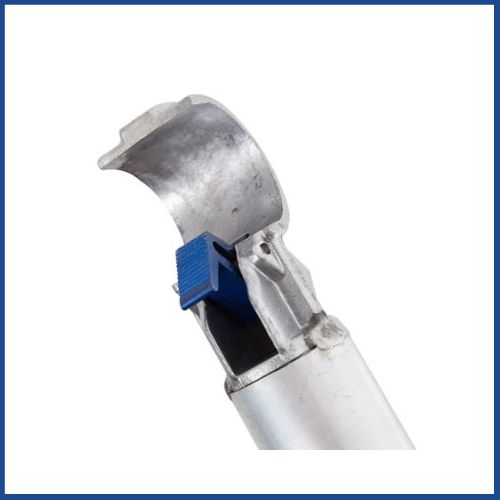
Diagonal braces are vital for scaffold tower stability, preventing distortion and structural failure. Their primary function is to counteract ‘racking’ or ‘swaying’ – a distortion where rectangular frames deform into parallelograms, risking collapse. Installed at opposing corners, these angled braces create a triangular bracing pattern that effectively distributes lateral forces from wind or movement. Working with horizontal braces, they make a rigid and stable structure, crucial for taller towers or those in high-wind areas. Constructed from durable materials like steel or aluminium, diagonal braces connect rigidly to vertical frames, providing essential resistance against lateral movement and ensuring overall tower safety.
Toe-board
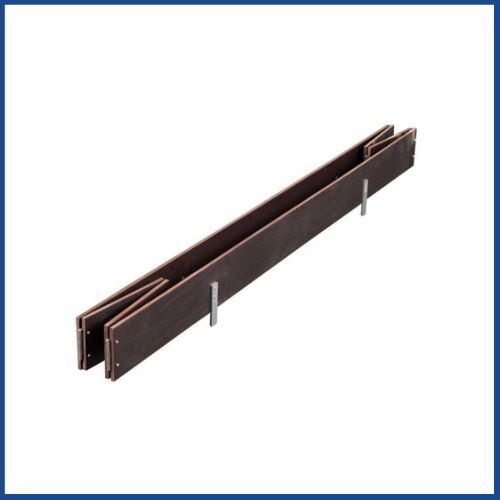
Toe-boards, also known as toe-guards or kick-plates, are essential safety components on scaffold towers. These low vertical barriers, constructed from durable materials like wood, metal, or plastic along platform edges, prevent tools, materials, and debris from falling and injuring workers below and prevent workers’ feet from slipping off the edge. As a crucial safety measure, toe-boards minimise the risks of dropped objects and slips, contributing to a safer work environment.
Standard Stabiliser
Standard stabilisers are essential safety components that prevent scaffold tower tipping. Extending the tower’s base with outriggers or arms significantly increases its footprint and resistance to overturning, which is particularly crucial for taller structures. These extensions widen the base, effectively increasing the distance between the tower’s center of gravity and its tipping point. Available in various types, including adjustable, fixed, and telescopic outriggers, they cater to diverse scaffold configurations and working conditions. Ultimately, stabilisers provide a more secure and stable work platform, minimising accident risks and ensuring worker safety at height.
Jumbo Stabiliser
Jumbo stabilisers are heavy-duty, enlarged versions of standard stabilisers, engineered to provide maximum stability for demanding scaffold tower applications. Designed for very tall or heavily loaded towers, they offer a significantly broader base, providing exceptional resistance to overturning, particularly in high-wind conditions or challenging environments. Constructed from robust materials, these stabilisers withstand greater forces and stresses than standard outriggers. They are essential for scaffolds supporting heavy equipment or those erected on uneven terrain, effectively maximising the tower’s footprint and minimising the risk of tipping.
Safebrace
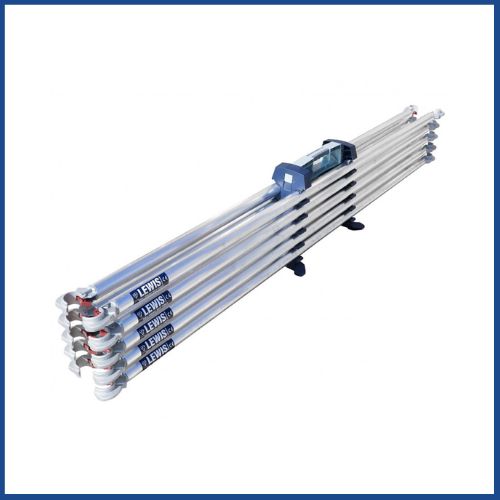
A “Safebrace” is not a structural component of a scaffold tower itself like a Diagonal or Horizontal Brace, but rather a carrying and storage device specifically designed for scaffold tower braces.





